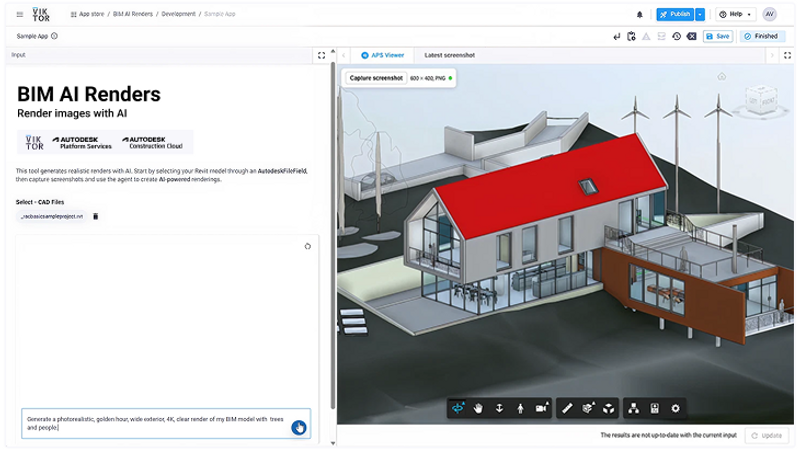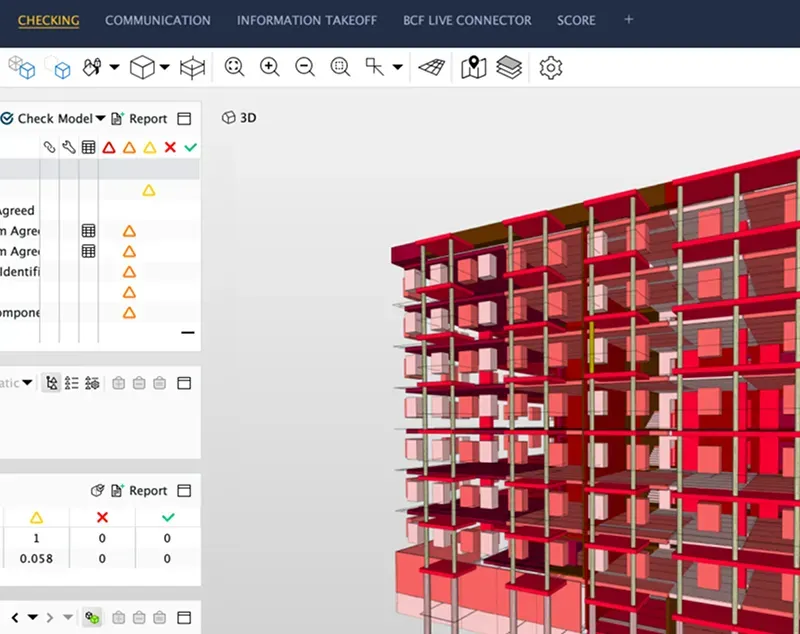Navigating the 3D Mapping Landscape
In the rapidly advancing realm of 3D mapping for the AEC industry, numerous technology categories and an astounding array of products, services, and options exist. As we embrace the mixed reality of the spatial computing era, the utilization of 3D mapping expands not only in AEC but also in gaming, filmmaking, real estate, industry, urban planning, archaeology, and more.

Each service and its underlying technology offer unique pros and cons. Understanding the applications and use cases of each approach is crucial for making informed decisions. This article provides an overview of the current technologies, concluding with the rationale behind selecting Terrestrial LiDAR as the preferred choice for Scan2Plan.
1) Close-Range Photogrammetry & NeRFs
Dating back to the 19th century, photogrammetry is the extraction of three-dimensional measurements from two-dimensional data (photos). Photogrammetry algorithms interpret a z coordinate (depth) from a sequence of flat x and y coordinates. Close-range photogrammetry is suitable for capturing detailed photographic information of smaller areas. It is commonly used in applications such as heritage preservation, and forensic analysis. One of the key advantages of close-range photogrammetry is its ability to capture fine photorealistic detail. This method requires careful planning, lighting and setup to ensure optimal image quality and accuracy. Photogrammetry can be time-consuming, capturing hundreds or thousands of images from multiple viewpoints to ensure full coverage and accuracy.
NeRF (Neural Radiance Fields) & Gaussian Splats are emerging technologies with new algorithmic ways of extracting 3D data from 2D photos. The technology is similar to photogrammetry in that it's an incredible tool for immersive content but essentially useless for construction-ready dimensional accuracy.
-
Pros: Cost-effective, useful for creating photorealistic 3D models
-
Cons: Time consuming, Less accurate than LiDAR, no validation without independent measurements or methods, requires photo coverage from every angle, struggles with detailed structures
-
Applications: Small Scale Interior Mapping & Modeling
-
Use Cases: Forensic Analysis, Heritage Preservation, Immersive Journalism, Gaming/XR
-
Products & Services: Reality Capture, Cupix, Polycam, Luma Ai
-
Accuracy: ⭐️⭐️
-
Range: ⭐️

Orthographic photogrammetry Image from Wessex Archaeology
2) Aerial Photogrammetry
Aerial Photogrammetry uses photogrammetry principles to generate maps and models from photos taken from a drone or aircraft. It’s cost effective and covers vast areas quickly. Aerial Photogrammetry is often integrated with geo-referencing and/or LiDAR to improve accuracy. Aerial photogrammetry is affected by lighting, weather conditions and flight regulations.
-
Pros:: Cost Effective, Fast, Covers Large Areas
-
Cons: Less accurate than LiDAR, no validation without independent measurements or methods, requires good lighting and weather conditions, may struggle with detailed structures.
-
Applications: Large Scale Exterior Mapping & Modeling
-
Use Cases: Topographic Mapping, Industrial Analysis, Building Inspections, Construction Documentation, Geology, Disaster Relief, Filmmaking, Gaming/XR
-
Products & Services: Drone Deploy, Skydio
-
Accuracy: ⭐️⭐️
-
Range: ⭐️⭐️⭐️⭐️⭐️

Model of London derived from Aerial Photogrammetry by AccuCities
3) Structured Light
Structured light technology involves projecting a pattern of light (usually infrared) onto an object and capturing the deformations of the pattern with a camera. This allows for the creation of 3D models by analyzing how the pattern is distorted on the object's surface. Structured light scanners, such as those used in the Matterport Pro2 system, are known for their ease of use and ability to capture 3D models quickly. These scanners are popular in industries such as real estate, interior design, and virtual tours, for their ease of use for space planning. Structured light technology has limitations, including a limited range compared to LiDAR and inability to scan in direct sunlight. Structured light scanners may struggle with scanning reflective or transparent surfaces. There is no way to validate tolerances without independent measurements or methods.
-
Pros: Easy to use, suitable for small to medium-sized spaces, good for creating immersive experiences
-
Cons: Less accurate than LiDAR, limited range, no validation without independent measurements or methods, Interior-only (inability to scan in direct sunlight)
-
Applications: Small Scale Interior Modeling & Space Planning
-
Use Cases: 3D Tours, Space Planning, Conceptual Documentation
-
Products & Services: Matterport Pro2
-
Accuracy: ⭐️⭐️
-
Range: ⭐️⭐️

Image developed in MidJourney
4) Time of Flight (ToF) Sensors
Time of Flight (ToF) Sensors are now included in consumer appliances like iPhones, iPads and Cars. These sensors measure the time it takes for a laser pulse to travel to an object and back, similar to traditional LiDAR, but they use a different method to calculate distance. They use a single chip that collects LiDAR data at a low sampling rate (hundreds vs millions of points). Since they use a single, forward facing chip versus a kinetic omnidirectional laser array, the user needs to walk around the space with the sensor for it to understand 3D geometry. This can lead to the dreaded “banana effect”.
-
Pros: Compact size, low cost, fast results, ase of Integration
-
Cons: Limited range and accuracy, no validation without independent measurements or methods, not suitable for complex, detailed or large-scale projects
-
Applications: Small Scale Interior Modeling & Space Planning
-
Use Cases: Space Planning, Interior Design, Conceptual Documentation
-
Products & Services: Canvas, Polycam
-
Accuracy: ⭐️⭐️
-
Range: ⭐️⭐️

Image courtesy of Jorma Palmén
5) Mobile LiDAR
Mobile LiDAR captures 3D data while in motion, typically mounted on vehicles (car, drone, etc). These systems use multiple LiDAR sensors and cameras to scan and capture detailed information about the surrounding environment. Mobile LiDAR is commonly used for mapping roads, railways, catenaries, and other linear infrastructure. Mobile LiDAR reduces the time and cost associated with traditional surveying methods. Mobile LiDAR systems may have limitations in terms of accuracy and detail compared to Terrestrial LiDAR systems. The data captured by mobile LiDAR may be less precise, especially in areas with complex geometry or where high levels of detail are required. Mobile LiDAR systems are expensive to operate and maintain.
-
Pros: Fast Data Capture, suitable for capturing large areas, useful for transportation infrastructure
-
Cons: Expensive, no validation without independent measurements or methods, struggles with detailed architectural features
-
Applications: Large Scale Exterior Documentation
-
Use Cases: Roads, Landscapes, Infrastructure, Municipal, Roads, Caternaries
-
Products & Services: LiDAR USA, Routescene
-
Accuracy: ⭐️⭐️⭐️
-
Range: ⭐️⭐️⭐️⭐️⭐️

Image courtesy of Oregon State University
6) SLAM Scanners
SLAM (Simultaneous Localization and Mapping) Scanners are designed for large scale indoor mapping and navigation. These scanners use a combination of LiDAR, cameras, and inertial sensors to create detailed 3D maps in real-time. SLAM scanners are ideal for mapping large indoor environments, such as malls or warehouses. They are often paired with devices like a Total Station or Terrestrial LiDAR to establish control points to independently validate any “drift” in the data across large areas.
-
Pros: Can map large indoor environments quickly
-
Cons: Requires additional control data for accuracy, may not be as precise as terrestrial LiDAR.
-
Applications: Extra large interior (over 100,000 sqft)
-
Use Cases: Malls, Campuses, Hotels Hospitals, Warehouses, Schematic Documentation, Construction-Ready Documentation, Historic Preservation
-
Products & Services: Navvis, GeoSlam
-
Accuracy: ⭐️⭐️⭐️⭐️
-
Range: ⭐️⭐️⭐️⭐️⭐️

SLAM point cloud captured by Scan2Plan
7) Terrestrial LiDAR
Terrestrial LiDAR, also known as kinetic LiDAR, is a powerful technology used for high-precision 3D scanning. Devices such as those from Leica, Trimble and Faro capture detailed point clouds of structures and landscapes. Terrestrial LiDAR scanners emit laser pulses and measure the time it takes for the laser to return, allowing them to calculate distances with millimeter accuracy. This technology is ideal for capturing detailed architectural, structural, MEP, and civil engineering features. One of the key advantages of terrestrial LiDAR is its high level of accuracy and range, making it suitable for capturing intricate details over large areas. Terrestrial LiDAR scanners can capture millions of points per second, providing a comprehensive and detailed representation of the scanned environment. Terrestrial LiDAR scanners are expensive, complex to operate and the scanning process can be time-consuming. Terrestrial LiDAR remains the preferred choice for professionals in the AEC industry due to its unparalleled accuracy, validation, and point cloud density.
-
Pros: High accuracy, range and sample rate, suitable for capturing detailed architectural features, self-validating data.
-
Cons: Higher cost and complexity,
-
Applications: Small, Medium and Large buildings and structures (interior & exterior), Landscape
-
Use Cases: Commercial & Residential Architecture, Structural, MEP & Civil Engineering. Schematic Documentation, Construction-Ready Documentation, Historic Preservation
-
Products & Services: Scan2Plan
-
Accuracy: ⭐️⭐️⭐️⭐️⭐️
-
Range: ⭐️⭐️⭐️⭐️

Scanned by Scan2Plan
Scan2Plan is experimented with each technology listed above. This has led the company to use exclusively terrestrial LiDAR for its unparalleled accuracy, density and self-validation. Scan2Plan's workflow is purpose built for construction-ready documentation. The goal is delivering the same level of accuracy and point cloud density on every project, which is why they rarely mix and match these technologies. Scan2Plan's workhorse scanner is the Trimble X7 which offers millimeter accuracy along with best-in-class software and extensibility.
Special thanks to V Owen Bush for authoring this insightful article. Learn more about Scan2Plan here.
Recent Articles
Learn about the latest architecture software, engineering automation tools, & construction technologies

Moving to the Cloud: Egnyte’s Staged Approach for Architecture Firms
As projects grow, AEC firms are rethinking data management and collaboration. This article outlines Egnyte’s six-stage Architecture Cloud Journey—a practical roadmap for moving from on-premise systems to secure, collaborative cloud environments. From assessment to continuous improvement, it shows how to streamline workflows, strengthen security, and future-proof with AI-ready infrastructure.

SaaS Founders: Are You Timing Your GTM Right?
This article was written by Frank Schuyer, who brings firsthand experience as a founder in the software and SaaS world. In this piece, he explores how founders can unlock faster growth and stronger market traction by integrating go-to-market strategy (GTM) from the very beginning of product development—rather than treating it as an afterthought.

The VIKTOR App Builder: Putting Automation into Every Engineer's Hands
The VIKTOR App Builder is changing how engineers automate their work. Built on VIKTOR’s secure, enterprise-ready platform, it lets users turn calculations, checks, and post-processing tasks into shareable browser-based apps—no coding required. In this interview, CPO Stijn Jansen explains why the team created it, how it bridges no-code, low-code, and full-code workflows, and what it means for the future of AI-assisted engineering.

Building Better with BIM QA: 2025 Interview with Solibri
Discover how Solibri CEO Ville Kyytsönen is redefining BIM quality assurance in our latest aec+tech interview. From Solibri Office’s advanced rule-based model checking to the cloud-based CheckPoint with Revit, Autodesk Construction Cloud, and Procore integrations, learn how Solibri helps AEC teams reduce rework, improve compliance, and deliver higher-quality projects.